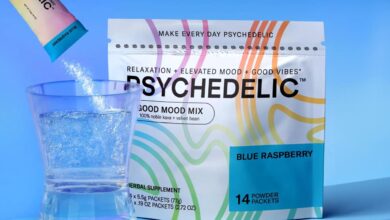
MRI detects abnormalities in brain depression, offering a window into the complex relationship between the brain and this often-misunderstood condition. This technology allows doctors to visualize structural and functional changes in the brain that might otherwise go unnoticed, potentially leading to earlier diagnosis and more effective treatment plans. We’ll delve into how MRI works, exploring the various techniques used to identify abnormalities and their clinical implications.
The detailed analysis will reveal the significance of MRI in understanding depression’s impact on the brain.
This exploration will cover everything from the basics of MRI technology and its applications in medical diagnosis to specific methods for detecting depression-related brain abnormalities. We’ll also examine the clinical significance of these findings, detailing how they inform diagnosis and treatment planning. Furthermore, the standard protocols, illustrative cases, limitations, and future directions will be discussed to provide a comprehensive understanding of this critical area.
Introduction to MRI and Brain Abnormalities
Magnetic Resonance Imaging (MRI) is a non-invasive medical imaging technique that uses powerful magnetic fields and radio waves to create detailed images of the internal structures of the body. Unlike X-rays or CT scans, MRI does not use ionizing radiation, making it a safer option for repeated imaging studies. This technology is crucial in medical diagnosis, allowing doctors to visualize soft tissues like the brain, spinal cord, and muscles with unparalleled detail.
Its applications extend beyond simple visualization; it can detect subtle changes and abnormalities, aiding in the diagnosis of various neurological conditions.MRI’s ability to visualize the brain’s intricate anatomy makes it invaluable in detecting a wide range of abnormalities. These abnormalities can manifest as structural defects, pathological processes, or variations from the typical brain structure. The detailed images generated by MRI allow clinicians to assess the extent and location of these anomalies, which is essential for accurate diagnosis and treatment planning.
MRI Detection of Brain Abnormalities in Depression
MRI plays a significant role in assessing patients suspected of having depression. While depression itself is not directly visible on an MRI scan, structural or functional brain changes associated with the condition can be detected. These changes can provide valuable insights into the underlying neurobiological mechanisms of depression and help in tailoring treatment strategies.
Types of Brain Abnormalities Detected by MRI, Mri detects abnormalities in brain depression
Various types of brain abnormalities can be detected using MRI. These include: structural anomalies such as tumors, cysts, or lesions; cerebrovascular conditions like strokes or aneurysms; and degenerative diseases like Alzheimer’s or multiple sclerosis. Further, subtle changes in brain structure or function can also be observed in conditions like depression, anxiety, and schizophrenia.
MRI Sequences for Brain Imaging
Understanding the different MRI sequences is crucial for interpreting the images and identifying potential abnormalities. These sequences allow us to visualize brain structures and abnormalities with different levels of contrast and detail.
| MRI Sequence | Purpose | Expected Findings |
|---|---|---|
| T1-weighted | Provides high contrast between gray and white matter, highlighting anatomical structures. | Clear visualization of brain anatomy, including ventricles, sulci, and gyri. Tumors and lesions may appear as areas of increased or decreased signal intensity compared to surrounding tissue. |
| T2-weighted | Highlights water content in tissues, which is useful for detecting fluid-filled lesions like cysts or areas of inflammation. | Cysts, edema, and areas of demyelination (characteristic of multiple sclerosis) appear brighter than surrounding tissue. Inflammatory processes might be visible as areas of high signal. |
| FLAIR (Fluid Attenuated Inversion Recovery) | Suppresses cerebrospinal fluid (CSF) signal, enhancing the visibility of lesions and abnormalities within the brain tissue. | Lesions or areas of inflammation within the brain tissue appear brighter than normal brain tissue. This sequence is particularly useful for detecting subtle abnormalities that might be obscured by the CSF signal. |
| Diffusion Weighted Imaging (DWI) | Measures the movement of water molecules within tissues. This is crucial for detecting acute changes, like those following a stroke. | Areas of acute injury, such as those caused by a stroke, show restricted diffusion, appearing as bright or hyperintense signals. This allows rapid identification of potential strokes. |
MRI Detection Methods for Depression-Related Brain Abnormalities
Magnetic Resonance Imaging (MRI) has revolutionized our understanding of brain structure and function, offering invaluable insights into the complex neural underpinnings of depression. By utilizing powerful magnetic fields and radio waves, MRI allows for detailed visualization of the brain, enabling researchers and clinicians to identify subtle abnormalities that might otherwise remain undetected. This capability is crucial in diagnosing and managing depression, as these abnormalities can provide valuable information about the disease’s progression and potential treatment responses.Beyond simply visualizing the brain’s anatomy, MRI techniques can also probe its functional activity.
This combined anatomical and functional approach is essential for comprehending the multifaceted nature of depression-related brain changes. This detailed exploration of MRI methods provides a more complete picture of the neurobiological landscape of depression.
Structural Brain Changes in Depression
MRI studies have consistently shown alterations in brain structure in individuals with depression. These changes are not always readily apparent but can provide crucial information about the underlying neurobiological mechanisms of the disorder. Specific areas and regions of the brain can exhibit significant variations in size, volume, and density. These alterations may contribute to the cognitive, emotional, and behavioral symptoms often associated with depression.
- Changes in Brain Volume: Studies have reported reductions in the volume of certain brain regions, including the hippocampus, amygdala, and prefrontal cortex, in individuals with depression. The hippocampus, crucial for memory and emotional regulation, is often affected, potentially contributing to memory impairments and difficulties in managing emotions. The amygdala, involved in processing emotions, especially fear and anxiety, might also exhibit volumetric changes, which could explain heightened emotional responses.
The prefrontal cortex, involved in higher-level cognitive functions, plays a critical role in regulating mood and behavior. Reduced volume in this region can lead to problems with decision-making, planning, and emotional control.
- Gray Matter Density Alterations: Gray matter, containing neuronal cell bodies, plays a critical role in processing information. MRI can detect reductions in gray matter density in regions implicated in mood regulation, attention, and memory. Such alterations may underlie some of the cognitive and emotional deficits seen in depression.
- White Matter Integrity: White matter comprises the nerve fibers that connect different brain regions. MRI techniques can evaluate the integrity of these tracts. Studies suggest that white matter integrity may be compromised in individuals with depression, potentially affecting communication between different brain regions. This disruption in connectivity may contribute to the symptom presentation. For example, reduced integrity in the tracts connecting the prefrontal cortex to other brain regions may contribute to problems with emotional regulation.
Functional Brain Changes in Depression
Beyond structural changes, MRI can also reveal functional abnormalities in the brains of individuals with depression. These functional changes relate to the activity levels of different brain regions during specific tasks or at rest.
- Functional Connectivity: Functional MRI (fMRI) measures brain activity by detecting changes in blood flow. Changes in functional connectivity, which measures the correlation in activity between different brain regions, can indicate disruptions in the communication pathways crucial for mood regulation. For instance, a decreased functional connectivity between the amygdala and prefrontal cortex might be observed, which can be linked to difficulties in regulating emotional responses.
- Metabolic Activity: MRI techniques can measure the metabolic activity of different brain regions. Lower metabolic activity in regions associated with mood regulation, such as the prefrontal cortex, has been observed in individuals with depression. These changes in metabolic activity could potentially explain the cognitive and emotional deficits.
Comparison of MRI Methods
| Method | Advantages | Disadvantages |
|---|---|---|
| Structural MRI (sMRI) | Excellent spatial resolution, relatively straightforward to acquire, and widely available. | Provides static images, does not capture dynamic changes in brain activity. |
| Functional MRI (fMRI) | Can assess brain activity in real-time, showing dynamic changes in neural activity. | Lower spatial resolution compared to sMRI, potentially susceptible to motion artifacts. |
| Diffusion Tensor Imaging (DTI) | Allows for visualization of white matter tracts, evaluating their integrity. | Requires specialized analysis techniques, may be less accessible than sMRI or fMRI. |
Clinical Significance of MRI Findings in Depression

MRI scans offer valuable insights into the complex neurobiological underpinnings of depression. Beyond simply identifying structural differences, these scans can contribute significantly to the diagnostic process and ultimately, improve treatment strategies. Understanding the potential brain abnormalities associated with various forms of depression allows clinicians to tailor interventions more effectively.
Clinical Implications of Brain Abnormalities in Depression
Detecting brain abnormalities in individuals with depression can have profound clinical implications. For instance, identifying specific patterns of gray matter reduction in the prefrontal cortex might suggest a predisposition to specific depressive symptoms. Furthermore, these findings can help differentiate between various depressive disorders, potentially guiding personalized treatment plans. Understanding these neural correlates can also lead to the development of novel therapeutic approaches targeting these specific brain regions.
Contribution to Diagnosis and Treatment Planning
MRI findings can play a crucial role in the diagnostic process. When combined with clinical evaluations and psychological assessments, MRI results can provide a more comprehensive picture of the patient’s condition. This integration of data enhances diagnostic accuracy, allowing for a more precise identification of the specific type of depression or related conditions. Treatment plans can be tailored based on the specific brain abnormalities observed.
For example, a patient exhibiting hippocampal atrophy might benefit from therapies that target cognitive function and memory restoration.
Differentiation of Depression Types and Related Conditions
MRI scans can aid in differentiating between different types of depression or related conditions. For instance, structural changes in specific brain regions might be more pronounced in major depressive disorder compared to persistent depressive disorder. Furthermore, differentiating between depression and other neuropsychiatric conditions, such as bipolar disorder or anxiety disorders, can be facilitated by the unique patterns of brain abnormalities associated with each.
This differentiation can significantly impact the choice of treatment.
Potential Brain Abnormalities in Depression
Understanding the relationship between specific brain abnormalities and various forms of depression can guide clinicians in their approach to diagnosis and treatment. The table below Artikels potential brain abnormalities observed in different types of depression.
MRI scans are revealing interesting abnormalities in the brains of people with depression, but a new study suggests a crucial link to weight loss. Recent research, for example, has uncovered the best strategies for people with depression to lose weight effectively. This study, study finds best way to help people with depression lose weight , highlights the complex interplay between mental health and physical well-being, potentially impacting how we approach treating the brain abnormalities detected by MRI.
Understanding these connections is key to developing more comprehensive and effective treatment approaches for depression.
| Type of Depression | Common Abnormalities | Supporting Evidence |
|---|---|---|
| Major Depressive Disorder (MDD) | Reduced gray matter volume in prefrontal cortex, hippocampus, amygdala; altered white matter integrity; hyperactivity in the amygdala; decreased hippocampal volume. | Numerous studies using voxel-based morphometry (VBM) and diffusion tensor imaging (DTI) have reported these findings. |
| Persistent Depressive Disorder (PDD) | Smaller hippocampal volume; subtle changes in prefrontal cortex; altered connectivity patterns between brain regions. | Studies have shown some overlap with MDD but often with less pronounced changes in volume and connectivity compared to MDD. |
| Postpartum Depression (PPD) | Reduced gray matter volume in specific regions associated with mood regulation; altered functional connectivity in limbic areas. | Research suggests specific neurobiological alterations related to hormonal fluctuations and the postpartum period. |
| Seasonal Affective Disorder (SAD) | Structural changes in specific brain regions sensitive to light exposure; altered activity in areas regulating sleep and mood. | Studies highlight the connection between light exposure and brain structure and function in SAD. |
Note: The specific abnormalities and their severity can vary significantly between individuals. This table provides a general overview, and further research is needed to fully understand the complex relationship between brain structure, function, and various forms of depression.
Imaging Protocols and Procedures
Unraveling the mysteries of depression often involves intricate investigations, and Magnetic Resonance Imaging (MRI) plays a crucial role in this process. MRI allows clinicians to visualize the brain’s structure and function, potentially revealing subtle abnormalities linked to depressive disorders. This detailed exploration delves into the specific protocols and procedures employed in MRI scans for detecting depression-related brain abnormalities.The standard MRI protocols for patients suspected of having depression aim to identify specific brain regions and characteristics associated with the disorder.
These protocols are designed to maximize the quality of the images while minimizing the risks and discomfort to the patient. A comprehensive understanding of these protocols is essential for accurate interpretation of the MRI findings and subsequent clinical decisions.
Standard MRI Protocols for Depression
Standard protocols for MRI scans in patients suspected of having depression typically involve a combination of structural and functional imaging techniques. Structural scans focus on anatomical details, while functional scans highlight the activity of different brain regions.
MRI scans can pinpoint abnormalities in the brain linked to depression, but a separate, alarming trend is impacting public health globally. This year, we’re seeing a concerning surge in measles cases, potentially making this the worst year for the disease in a decade. why this could be the worst year for measles in a decade. While the exact reasons for this spike are complex, it’s important to remember that timely and accurate diagnoses of depression, like those provided by MRI, are crucial for effective treatment and care.
- Structural MRI: This involves acquiring images of the brain’s anatomy. High-resolution images are crucial for identifying any structural anomalies, such as reduced gray matter volume in specific brain regions, which may be associated with depression. Typical sequences include T1-weighted and T2-weighted images, often complemented by fluid-attenuated inversion recovery (FLAIR) sequences to better visualize white matter structures and cerebrospinal fluid.
- Functional MRI (fMRI): This technique measures brain activity by detecting changes in blood flow. fMRI studies can assess brain function during specific tasks or rest periods, revealing possible dysregulation in neural circuits associated with depression. Examples include tasks involving emotional processing, attention, or cognitive control. Common fMRI techniques include BOLD (Blood Oxygen Level Dependent) fMRI.
Steps Involved in Performing and Interpreting MRI Scans
The process of performing and interpreting MRI scans for depression-related brain abnormalities involves several critical steps.
- Patient Preparation: Patient preparation is paramount. Patients are often asked to refrain from consuming certain foods or drinks before the scan. Metal objects, such as jewelry or hairpins, must be removed to prevent interference with the MRI machine. Detailed instructions are provided to ensure optimal image quality.
- Positioning and Scan Acquisition: The patient is carefully positioned within the MRI machine’s bore. Precise positioning is critical to ensure consistent image alignment and reduce motion artifacts. The MRI technician meticulously selects the appropriate sequences and parameters based on the specific protocol for depression. This is vital for obtaining high-quality images.
- Image Analysis: Post-scan, the acquired images are meticulously analyzed by trained radiologists. They examine the images for any structural or functional abnormalities, comparing them to normal brain anatomy and function. Software tools aid in the process of precise image measurement and quantification of any detected abnormalities. Comparison with previous MRI scans of the patient can provide valuable information on any progressive changes.
Importance of Patient Preparation and Positioning
Patient preparation and positioning are crucial for obtaining high-quality MRI images. Any movement during the scan can introduce artifacts, potentially obscuring subtle abnormalities. Appropriate positioning ensures that the brain is consistently aligned within the imaging field of view, facilitating accurate interpretation.
Flowchart of MRI Examination for Depression
The following flowchart illustrates the steps involved in a typical MRI examination for suspected depression:
Start | V Patient Preparation (Remove metal, instructions) | V Positioning and Scan Acquisition (Specific sequences) | V Image Analysis (Comparison to normal brain, software) | V Report Generation (Findings summarized, recommendations) | V End
Illustrative Cases and Examples
Understanding the subtle brain changes associated with depression is crucial for diagnosis and treatment.
MRI plays a vital role in identifying these changes, offering insights that can guide clinicians in developing personalized care plans. The following case studies illustrate how MRI findings can inform clinical decisions.
MRI scans are crucial in detecting abnormalities in the brain associated with depression, helping pinpoint potential issues. However, as we delve deeper into mental health care, the question arises about whether we need specialized “sanctuary hospitals” to ensure patients feel safe and supported during their treatment journey. do we need to create sanctuary hospitals ? Ultimately, advanced imaging like MRI remains a vital tool in diagnosing and understanding the complex neurological underpinnings of depression.
Case Study 1: Chronic Major Depressive Disorder
This patient, a 35-year-old woman, presented with symptoms of chronic major depressive disorder, including persistent low mood, loss of interest in activities, and sleep disturbances. MRI scans revealed reduced gray matter volume in the prefrontal cortex, a region crucial for executive function, decision-making, and emotional regulation. This finding aligns with known neurobiological models of depression, which suggest that reduced prefrontal cortex activity contributes to emotional dysregulation.
The reduced volume potentially indicates a loss of neurons or synapses in this critical brain region. The clinical significance of this finding is substantial; it supports the diagnosis and highlights the need for targeted therapies, such as cognitive behavioral therapy (CBT) and antidepressant medications, to potentially stimulate neuronal growth and function in the prefrontal cortex.
Case Study 2: Depression with Anxiety
A 28-year-old man presented with a combination of depressive symptoms and significant anxiety. MRI scans demonstrated diminished hippocampal volume, a structure critical for memory consolidation and emotional processing. The reduced hippocampal volume could be linked to the patient’s history of chronic stress, a known risk factor for depression and anxiety. The findings indicate potential structural changes in the brain, and support the need for treatment that addresses both anxiety and depression, possibly including therapies that aim to reduce stress and improve emotional regulation.
Case Study 3: Treatment Response in Depression
A 42-year-old woman with a history of recurrent depression was prescribed a novel antidepressant medication. Follow-up MRI scans after six months of treatment showed a slight increase in gray matter volume in the amygdala, a region associated with processing emotions, and the hippocampus. This positive response to treatment suggests that the medication may have been beneficial in promoting neurogenesis or neuroplasticity in these areas, which could be crucial in alleviating depressive symptoms.
Healthy Brain MRI Illustration
Imagine a vibrant, detailed image of the brain. The various structures, such as the cerebral cortex, cerebellum, and brainstem, appear distinct and symmetrical. The gray matter, the brain’s processing centers, are a rich, mottled tone, contrasted by the white matter, which facilitates communication between different regions. The ventricles, fluid-filled spaces within the brain, are clearly visible and appropriately sized.
This image represents a typical healthy brain structure as observed through MRI.
Abnormal Brain MRI Illustration (Depression)
Now imagine a similar image, but with subtle yet significant differences. The gray matter in the prefrontal cortex might appear less dense, or potentially diminished in volume compared to the healthy brain image. There could be subtle asymmetries in the brain structures, and the ventricles might appear slightly enlarged. The hippocampus, a critical structure, might show a diminished volume, or possibly a less distinct shape.
These observations, when considered collectively, suggest potential structural abnormalities that are associated with depressive symptoms. These subtle deviations can provide important insights into the underlying neurobiological processes and guide therapeutic strategies.
Limitations and Future Directions

MRI offers valuable insights into brain structure and function in depression, but it’s not without limitations. Interpreting the complex interplay between brain abnormalities and depressive symptoms requires careful consideration of these constraints. Further advancements in MRI technology and the integration of other neuroimaging techniques hold promise for a more comprehensive understanding of the neurobiological underpinnings of depression.
While MRI provides high-resolution images of brain anatomy, directly linking specific structural or functional changes to the experience of depression remains a challenge. The relationship between these observed changes and the individual’s subjective experience of depression is not always straightforward. There are many factors that influence brain structure and function beyond the scope of depression.
Limitations of MRI in Detecting Depression-Related Brain Abnormalities
MRI technology, while powerful, faces certain limitations in the context of depression research. These limitations often stem from the complexity of the disease itself and the challenges in accurately measuring the subtle changes that may be present. Identifying reliable biomarkers for depression remains a significant hurdle.
- Variability in Brain Structure and Function: Individual variations in brain structure and function exist even in healthy populations, making it difficult to pinpoint specific abnormalities associated solely with depression. Different individuals may experience similar depressive symptoms but exhibit different brain imaging characteristics. A standardized approach for comparing data across studies is essential.
- Correlation, Not Causation: MRI studies can reveal correlations between brain abnormalities and depression, but they cannot definitively establish a causal link. Other factors, including genetic predispositions, environmental influences, and concurrent medical conditions, can contribute to both the observed brain changes and the development of depressive symptoms.
- Sensitivity and Specificity: Current MRI techniques may not be sensitive enough to detect subtle or early changes in brain structure or function that could be indicative of depression. Furthermore, the specificity of the detected changes may be insufficient to differentiate between depression and other conditions with similar neurological presentations. This necessitates careful consideration of the full clinical picture in interpreting the imaging findings.
- Cost and Accessibility: MRI scans can be expensive, and access to this technology may be limited in certain regions, potentially introducing a significant disparity in research and clinical applications. More affordable and widely available imaging techniques are needed to broaden the reach of these diagnostic and research tools.
Potential Areas for Improvement and Future Research
Future research should focus on developing more sophisticated analysis methods and refining the diagnostic capabilities of MRI in the context of depression.
- Improved Image Analysis Techniques: The development of more sophisticated algorithms for analyzing MRI data can enhance the detection of subtle abnormalities and patterns that may be missed by traditional methods. Machine learning techniques may play a significant role in this advancement.
- Multimodal Imaging Approaches: Combining MRI data with other neuroimaging techniques, such as fMRI (functional MRI) and EEG (electroencephalography), can provide a more comprehensive view of brain activity and connectivity. Integrating multiple data sources can help address the limitations of any single modality.
- Longitudinal Studies: Longitudinal studies tracking brain changes over time in individuals with depression can provide valuable insights into the progression of the disorder and the impact of interventions. These studies can help refine our understanding of the temporal dynamics of depression and the effectiveness of various treatment approaches.
- Larger and More Diverse Samples: Employing larger and more diverse samples in MRI studies will enhance the generalizability of findings and minimize biases related to demographic factors. This is crucial for accurately representing the diversity of individuals experiencing depression.
Role of Other Neuroimaging Techniques
Integrating other neuroimaging techniques with MRI can provide a more nuanced understanding of brain abnormalities related to depression. These complementary techniques can offer insights into different aspects of brain function.
- Functional MRI (fMRI): fMRI measures brain activity by detecting changes in blood flow. This technique can reveal dynamic patterns of brain activation associated with depressive symptoms, which may not be apparent in structural MRI alone. Combining fMRI with structural MRI can provide a more comprehensive picture of the neurobiological mechanisms underlying depression.
- Electroencephalography (EEG): EEG measures electrical activity in the brain, offering insights into the temporal dynamics of neural processing. EEG can detect subtle changes in brainwave patterns that may correlate with depressive symptoms, providing a different perspective from both structural and functional MRI approaches. The integration of EEG with other neuroimaging techniques could potentially provide a more comprehensive understanding of the neurobiological basis of depression.
- Magnetoencephalography (MEG): MEG measures magnetic fields produced by brain activity. Similar to EEG, MEG provides a high temporal resolution view of brain activity, potentially revealing more about the neural mechanisms associated with depression and its treatment. MEG complements other neuroimaging techniques in understanding the intricacies of brain function.
Closure: Mri Detects Abnormalities In Brain Depression
In conclusion, MRI plays a crucial role in understanding and treating depression. By visualizing the brain’s structural and functional changes, MRI provides valuable information that can improve diagnostic accuracy and treatment effectiveness. While limitations exist, future research and advancements in neuroimaging hold the promise of even more precise and insightful information. This exploration has highlighted the profound impact of MRI in revealing the intricacies of depression and its effect on the brain.





